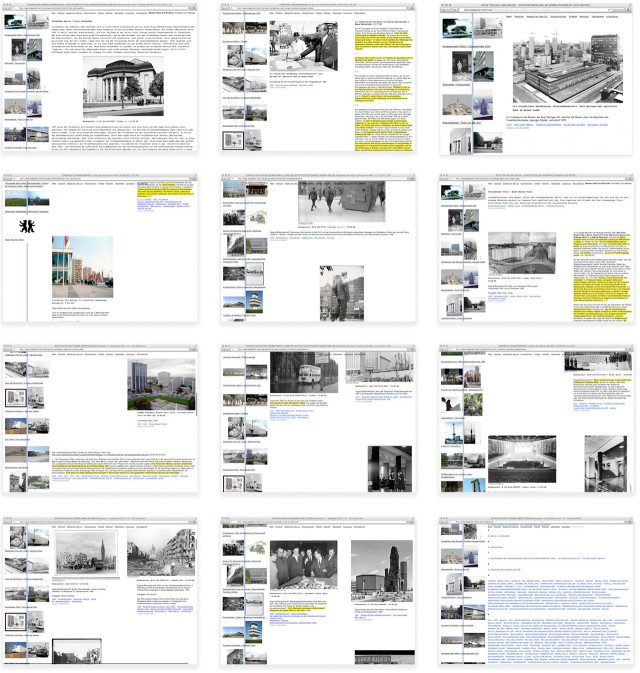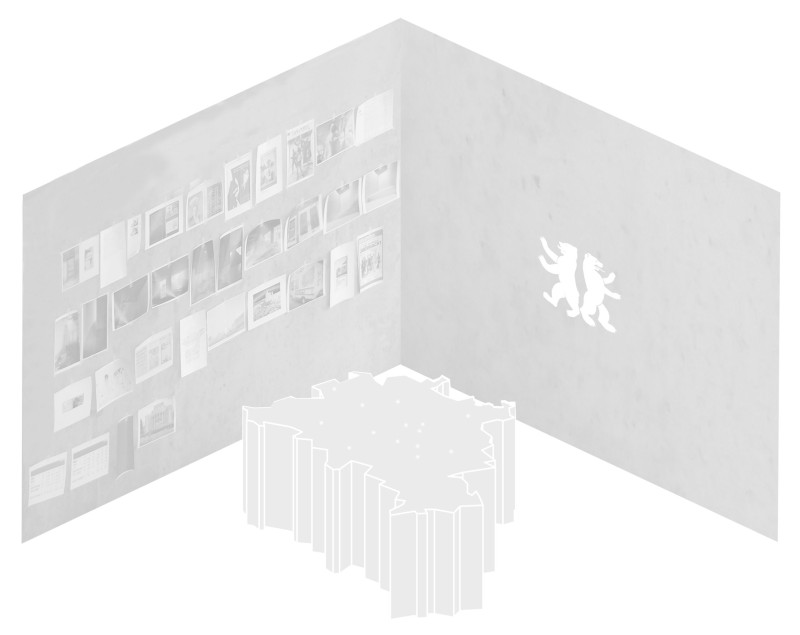- Typology
- Research
- Project
- Doppeltes Berlin XXX
- Partner
by Tobias Hönig
- year
- 2011 - 2012
- Location
- Haus der Kulturen der Welt HKW, Bezirk Mitte, Berlin, Deutschland
- Research project based on the same titled master thesis presented at the Academy of Fine Arts in Nuremberg, that deals with the doubling of architectures as carrier of ideologic messages during the systemic rivalry of East and West in Berlin between 1945 and 1990.
 XXX
XXX
Fig.001© Initiative Weltkulturerbe Doppeltes Berlin
 XXX
XXX
Fig.008© c/o now
 XXX
XXX
Fig.006© c/o now
 XXX
XXX
Fig.003© strobo M. Friederich J. von Klier
 XXX
XXX
Fig.002© strobo M. Friederich J. von Klier
 XXX
XXX
Fig.004Berlin's mayor Michael Müller in front of the "Doppeltes Berlin"-flag during a speech on the occasion of the 25th anniversary of the fall of the Berlin Wall.
Der Regierende Bürgermeister von Berlin, Senatskanzlei
 XXX
XXX
Fig.009Sketch of presentation-setup for the celebrations of the 25th anniversary of the Fall of the Berlin Wall.
© c/o now
 XXX
XXX
Fig.007In March 2012 "Doppeltes Berlin" was part of the "What happened in Berlin 2081"-congress by Christopher Roth & Georg Diez at the KW Institute for Contemporary Art in Berlin.
© c/o now
Architecture and ideology are reciprocally related. Architecture is always an expression of social conditions and thus always, as manifestation as well as in its perception, only understandable in the context of a socially and individual psyche. Compared to all other everyday objects, ideology preferably uses architecture as carrier of its ideologic message. To focus on this circumstances and to open the possibility of critic on the other hand, it has to be accepted that there is a principally ideologic aspect associated with any architecture. There is no architecture without an ideologic aspect. The relationship between architecture and ideology is nowhere as clear as in territories of political, national, ethnical, ideologic or religious devision. Berlin between 1945 and 1989 uniquely typifies the ideologic aspect of architecture. The divided capital, „Das doppeltes Berlin - The Doubled Berlin“, needed to duplicate all of its state-, urban-, living- and cultural buildings. In each different, reflect-able form of architecture, circumstances in itself become visible and doubled at the same time in its specific ideological orientation. Berlins development since the 1990s towards a western global metropolis observably destroys the ideologic-cultural heritage which materializes in its buildings and architectural situations. Because of this the extraordinary visibility of ideology’s very fundamental influence on architecture starts to blur.